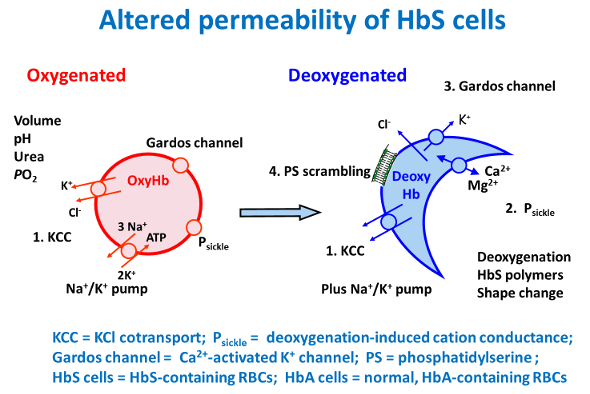Permeability of red cells in normal individuals and in haemoglobinopathies including sickle cell disease
We work on cellular ion and water homeostasis and how it is altered in various pathophysiological conditions. The main focus of current work is the permeability of red blood cells and how these become perturbed in haemoglobinopathies notably sickle cell disease and other red cell conditions. Sickle cell disease is the commonest severe inherited disease affecting millions of people worldwide including some 12-15,000 in the UK. As such, it is a disease of considerable clinical and economic significance. Notwithstanding, treatment remains largely symptomatic and the search for better management regimes is pressing.
Altered red blood cell permeability in these conditions contributes to pathogenesis in a number of different ways. Understanding the processes is important for a full appreciation of the diseases. They may also provide novel approaches to correcting abnormal permeability and thereby provide new chemotherapies for ameliorating the clinical complications of the disease.
Current sickle cell projects include: altered potassium permeability and how it causes red blood cells to shrink, elevating intracellular haemoglobin S concentration and thereby encouraging haemoglobin S polymerisation and sickling; a comparison of the different genotypes of sickle cell disease, notably HbSS, HbSC and HbSS-Oman; the mechanism and prevention of phosphatidylserine exposure as a prothrombotic and phagocytic event; the genetic and molecular physiology of key transport systems such as KCl cotransport; and identification of biomarkers for important clinical complications such as sickle cell nephropathy.


